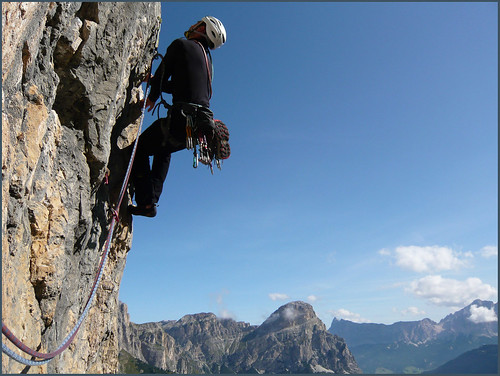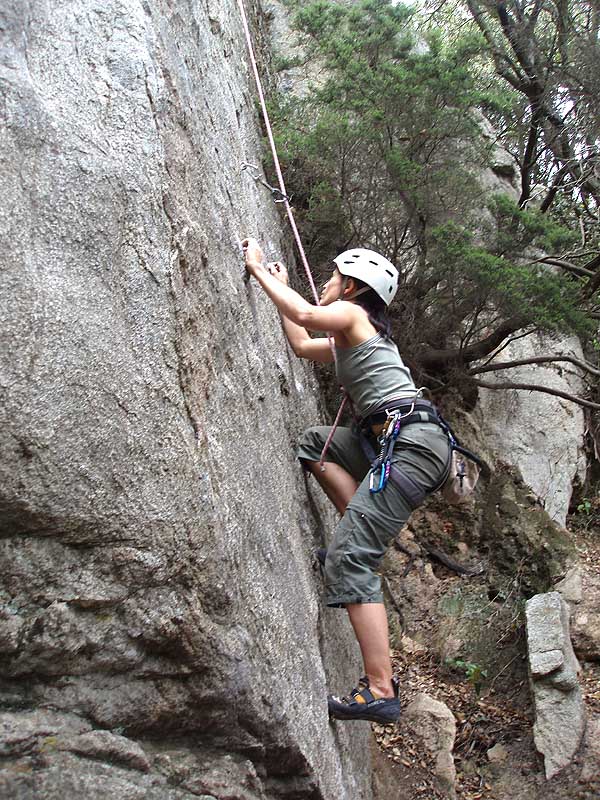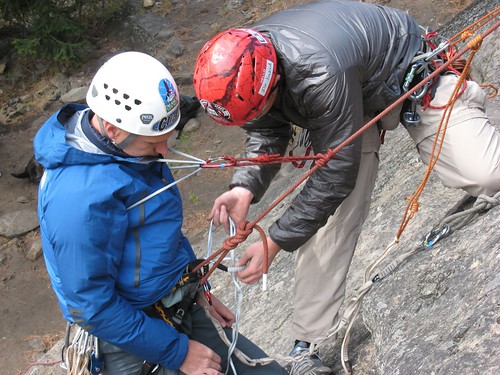
In climbing, the security consists of a number of factors that work all the time keep the climber on the wall. These factors, rope, harness, knots, carabiners, etc.. And collection systems and make it safe assurance escalation, if any of these factors failure would jeopardize the cordate.
There are a variety of knots, but we have to look for our mountain activity nodes that are simpler to perform and which are themselves polyvalent. A knot must be effective and serve their purpose quickly and easily. Many climbers report that half a dozen knots can resolve any situation on the mountain. So then we show you the main hubs for safer your climb.
Knots of Union:
Tape Knot: A handy knot to attach ribbons or cords of assembly or anchorage. We must leave a surplus at each end once we have finished the knot. This knot is tightened strongly when you apply any load.
Chicote Eight Knot: We conducted a eight knot in one end of a rope and then we turned him going through it the other line. Practical knot when similar diameters splice ropes for a rappel or when we secured a rope to a tree or a block.
Double Fisherman Knot: This is two faced and tight double knots each other. Ideal knot for joining ropes of different diameters. Also used to connect auxiliary ropes.
Strip Knot: A knot is convenient for declines in walls with cracks and crevices. The design keeps the rope knot snaps in some crevice. To do this takes a simple knot Strip about 25 inches from the ends of the rope, squeezing it well.
Anchor Knots:
Serve to fix ropes, bind or ride to meetings and self-rescue maneuvers. Knot is a very easy to make and is used to ensure a meeting, to set fixed ropes and rescue maneuvers.
Clove hitch knot: Knot very versatile and practical that can be used in all the maneuvers of rope. It has a high degree of safety and is one of the nodes chosen by climbers and rescue groups.

Eight Knot Twin Breasts: A very strong knot and practical. Used to fix ropes and set up meetings.
Lark’s Knot: Although a fragile knot design we can use it to anchor in a meeting or to strangle nails for climbing.
Romano Node: Allows you to set up fixed ropes and also to «zip lines» and rescues. It is a very strong knot.
Butterfly Knot: It is convenient to maneuver over glaciers and fixing ropes.
Knots for tying:
Chicote Eight Knot: A knot resistant and recommended for the rope to the harness.
Node Wagner: An eight that eventually introduce the place inside the knot. This knot is more secure and easier to undo than eight times. It goes very well in difficult walls.
Locking hubs
These knots are essential for self-rescue situations, climb ropes, safe during abseiling, crevasse rescue, etc..
Marchard with a sinus node: A node unidirectional drawing up giving several turns around the rope and lower spending within the «sling» through the upper breast. Node convenient to rescue maneuvers.
Marchard with two breasts knot: This knot blocked in both directions. The advantage of this knot over others is its ease of release.
Prusik Knot: This is the best known self-locking knot. It blocks a lot. It is a practical knot for tieing glacier.

Bachmann knot: This knot is done by tying the rope around it and a huge clip placed parallel to it. It moves very well down the rope. Do not ever the carabiner clasp knot (care). Node convenient way for the rise of strings.
Dynamic Node
It is one of the most practical of employees in climbing. It is a good knot for rappelling and to assure the cordate. It has a very high stopping power and dynamic.
When it is appropriate that we use to ensure or abseil, we do keep the two ends of rope parallel to leverage the strength of the knot as possible.
And you know, a manual by itself can teach you the proper knots. At first you have to practice hard and always under the supervision of an expert, it is your safety and that of those who accompany you on the climb.
So to train and good climb.
Leave a Reply
You must be logged in to post a comment.
Recent Comments